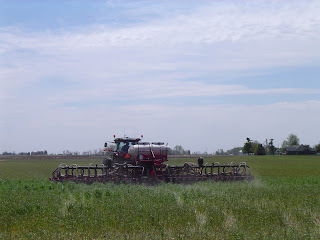The theme highlights the importance of knowing where your food comes from. The National Association of Conservation Districts could not have selected a more appropriate theme.
That is why the Indiana Association of Soil and Water Conservation Districts and our 92 Soil and Water Conservation Districts and our great Indiana Conservation Partnership (ICP) work so hard to promote the "soil to spoon" story.
 |
A sample of some very healthy soil protected
by cover crops over the winter from a farmer's field.
Cover crops protect against water and wind erosion and
improve soil quality.
|
The Conservation Cropping Systems INitiative (CCSI), and ICP program, helps Indiana farmers by promoting a systematic approach to production agriculture. CCSI specialists encourage the adoption of long-term continuous no-till practices on farmland, along with cover crops, nutrient and pest management and precision-farming technology, and the use of conservation buffers.
 |
Hamilton County farmer Rodney Rulon is
planting soybeans into cereal rye, a cover crop. Rulon is a Supervisor for the Hamilton County Soil and
Water Conservation District.
|
Because it is providing us with: clean water to drink, and healthy soil to grow food and feed
And, that's good stewardship.
